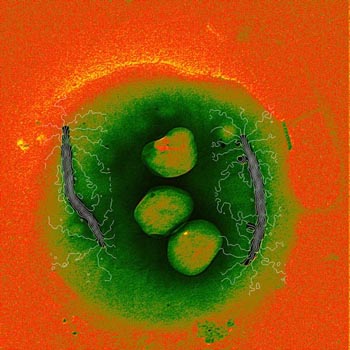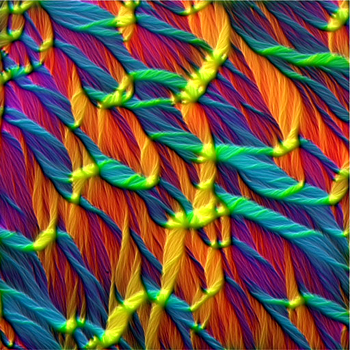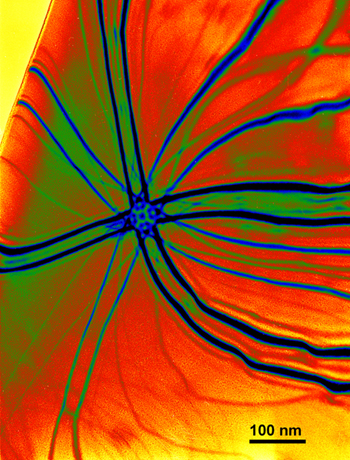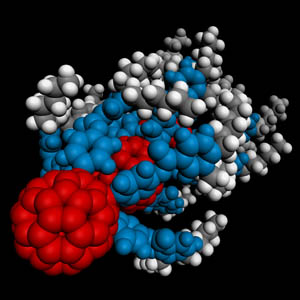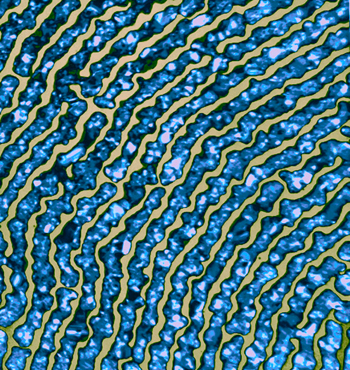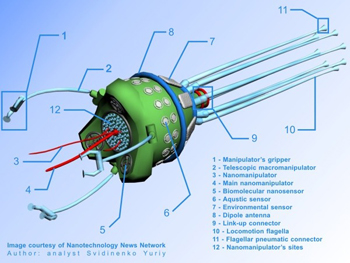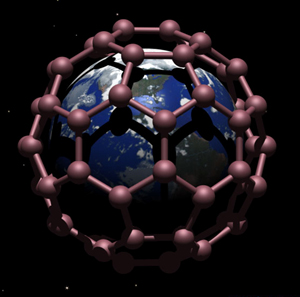In 2004 I interviewed companies about their nanoscale materials. Today, I’d like to present their answers to my last question, along with miscellaneous notes and updates on each, and some observations I made along the way.
RR: What new types of materials do you expect to be creating in 5 years, and what properties do you expect them to exhibit that differ from today's materials?David Carnahan, President NanoLab: Outside of our internal device development efforts, we are also working to expand our offerings of nanoparticles, nanowires, etc. The ability to grow, place or manipulate these particles on various substrates will be important to device manufacturers. For the nanotubes, we look to a strong future in advanced composites.
(RR) NanoLab has expanded their product list, and appears to be (as they said they would) putting greater effort into nanotubes. Their bulk MWCNT prices are among the lowest I have seen (100 grams @ $8/gr). See http://www.nano-lab.com/carbonnanotubeproducts.html
Jason Lemkin, Chief Business Officer NanoGram Devices Corporation: We have developed almost 100 nanoscale compositions and are focused on the biomedical and energy storage spaces.
(RR) In 2004, NanoGram Devices Corporation was sold for $45 million to Wilson Greatbatch Technologies.
Patrick Collins, Marketing Director Hyperion Catalysis: In addition to being used as a conductive additive, there has been recent work by a number of researchers that indicates that nanotubes are an excellent non-halogenated flame retardant for plastics. They are effective at the same low loading as in ESD applications, thus giving better retention of the resin's physical properties.
(RR) They now produce multiple tons of MWCNT, but only as part of other products such as thermoplastic resins (nylon, polycarbonate, polyesters, PEEK, PEI and others). The incorporation of nanotubes into resins appears to have huge potential, potentially effecting several major industries, such as aerospace, military, and automobile.
Sharron G. Penn, Ph.D., Director of Chemistry, Nanoplex Technologies: Nanoplex Technologies Inc. is continuing to develop future generations of encoded nanoparticles for a variety of applications.
(RR) Nanoplex Technologies is now part of the Oxonica family. They remain in the business of “detection technologies enabling a full spectrum of transformational diagnostic tools that bridge the healthcare market from drug discovery, to the clinical laboratory and point-of-care.”
Jessica Lu, General Manager Nanocs: We are developing our series products with better performance and more functions. (Functional nanocrystals with special optical, electrical, magnetic properties and bioactivity, including carbon nanotubes, conducting and semiconducting nanocrystals, nano magnetic particles and related nanoscale thin film.)
(RR) Nanocs remains in the nanotube, nanoparticle, and tools business.
Julien Roux, Market Analyst and Business Development Manager, Nanoledge: Nanoledge develops a unique nanotube macroscopic fiber. This fiber will be used as mechanical reinforcement, and is composed of more than 60% in weight of carbon nanotubes, aligned in the fiber.
(RR) Nanoledge remains in the nanotube business. They now offer a CNT filled resin (the nanotubes being supplied by Arkema).
Jonathon Foreman, Marketing and Sales Manager NexTech Materials: We plan to vastly increase our efforts in catalysis and sensor materials.
(RR) Their emphasis (as shown on their website) is now fuel cell and fuel processing components; Catalyst and Sensors, and SOFC and Components.
Olivier Decroly, Sales & Applications Manager Nanocyl: Carbon nanotubes with more controlled properties: electronics, surface chemistry, geometry - these will be true nanoengineered materials.
(RR) Nanocly remains in the nanotube business, offering multiple varieties. Their current list of applications is impressive (http://www.nanocyl.com/applications/intro.php).
Keith A. Blakely, CEO NanoDynamics: We anticipate that over the next several years, NanoDynamics will be expanding its commercial product offering to include a much wider range of specific metals and metal oxides for various applications in semiconductor, microelectronic, biomedical, catalysis, and energy applications. We also anticipate that our efforts in nanostructured carbon will permit the incorporation of nanotubes into more and more composite applications, where the exceptional strength of CNTs will enhance the performance of numerous polymer-based materials.
(RR) To-date NanoDynamics’ most visible product remains the NDMX golf ball, which isn’t to say that they aren’t worth watching, quite the contrary. Keep an eye on their fuel cell materials, life sciences, and nano-enabled materials.
Katrin Mohrlueder, NanoDel Technologies GmbH: (We) expect to create nanoparticles or nanocapsules consisting of alternative biodegradable polymers and or co-polymers having a particular surface for the targeted delivery of drugs to specific sites within the body (organ-specific drug targeting, e.g. lungs, gastro-intestinal-tract). This can be done either by modifying the surface of the nanoparticles using standard organic chemistry or by adsorption of antibodies.
(RR) Worth watching: their blood brain barrier nanoparticles. Take a look at Doxorubicin, a patent-protected nanoparticle/doxorubicin formulation for the treatment of brain tumors. http://www.nanodeltech.com/products.shtml
Wayne Daniell, CEO NanoScape AG: We aim to make hybrid materials combining the advantages of mixed meso and microporosity, with enhanced selectivity to both adduct and product, and combine nanocrystalline materials with microcrystalline, to ensure thermal stability and longevity.
(RR) “Novel materials combined with surface functionalization, coating and encapsulation technologies.” Nanocrystalline materials: “They form a highly flexible materials platform from which, through structural modification and surface functionalization, a plethora of further tailor-made products can be realized.” The reason I make more of this is due to their excellent description as to why nanoscale materials radically change the game.
Mark Wilson Ph.D., NanoHorizons: In the next five years we plan to be developing nanostructured materials in such areas as: chemical sensors and processes for manufacturing flexible electronic devices. Our sensor program is oriented toward low cost detection of chemicals, including but not limited to water vapor, with extraordinary response speed and sensitivity. Our materials for flexible electronics will allow high performance microelectronics to be placed on flexible substrates. This will allow CMOS logic and memory devices, which must be made at high temperatures, to be placed on low temperature flexible surfaces.
(RR) Keep an eye on their: Matrix-Less MALDI Technology, Photovoltaics and Organic LEDs, and Sensors. I have been watching their anti-ordor nanoscale silver technology, which was recently chosen by Shock Doctor for the sporting goods lines. Here’s what they say: “a nanoscale-engineered additive designed to create permanent anti-odor and antimicrobial protection in fibers and fabrics.” As a racquetball player I can attest to the potential market in this area! (http://www.nanohorizons.com/PR01102007.shtml)
Cheryl V. Sherman, Powdermet: Powdermet will be producing engineered magnetic materials having higher energy density and lower losses, and greater corrosion and temperature stability than current materials. We will also be producing engineered friction materials with greater temperature capability, reduced wear and more stable friction coefficients. Also, Powdermet will be producing multi-functional materials with properties not yet seen together in the natural word.
(RR) Their product line has expanded. See http://powdermetinc.com/Products.html
Sami Mardini, Kainos Energy Corporation: The compositional versatility and direct conversion of precursors to SOFC layers from using the LRD approach will be leveraged to create high performance materials for SOFC cells, interconnects, and seals. Among the advances these materials will provide are fuel flexibility, lower operating temperature, higher electrocatalytic activity, less degradation, and increased hermeticity without compromising cost.
(RR) I have been watching Kainos Energy Corporation and their energy (fuel cell) technologies for years. This is just one of many companies that stand a chance of making the big bucks with their nanotechnologies. As they say “Recent market projections estimate a $46B global fuel cell market by 2011.” I think we can reasonably extrapolate a trillion-dollar market by the late teens. Think that potential market might spur radical change, massive investment, and a whole new Fortune 500 lineup?
Read the rest of the interview at http://www.nanotech-now.com/products/nanonewsnow/issues/009/009.htm#survey
A couple things struck me while building this entry:There are more “legit” nanoscale materials companies now than 2004.
There are more nanoscale materials companies that look like good bets and are receiving solid investment dollars.
There are more nanoscale materials companies making inroads in consumer products.
Energy technologies and high strength-to-weight ratio materials are being taken to the next level by nanoscale materials.
In my opinion, the potential market for nanoscale materials rivals that all but a few. In fact, as mentioned above, we’re likely to see several trillion-dollar markets by the late teens, all of them enabled by nanoscale materials.
In the lifetime of most boomers, nanoscale materials will be a part of many every day things.
Where strength to weight is an important factor, expect to see nanotubes become a significant contributing factor into tomorrow’s advanced aerospace, military, and then consumer products.
Medicine will find many uses for nanoscale materials, in how we diagnose, treat and prevent disease.
In retrospect, none of those observations surprised me, or will surprise anyone who has been watching nanoscale materials. For many years the trend has been towards the nanoscale, simply for the increased surface area. Now we are learning how to exploit the different physical properties exhibited only at the nanoscale. The possibilities seem endless.



